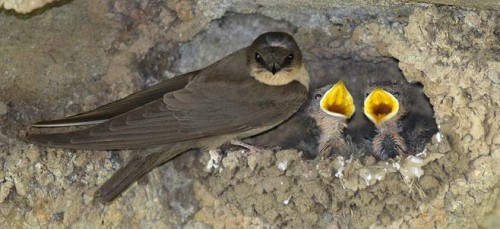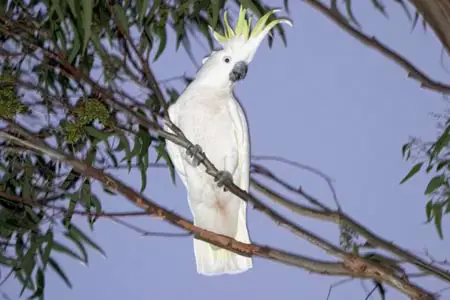Rock Martin
The Rock Martin is a small bird that is a member of the swallow family. It is a resident of Africa as well as south-western Asia as east as Pakistan.
It was first formally scientifically described by Martin Lichtenstein in 1842 as Hirundo fuligula. However, Heinrich Gustav Reichenbach created a new genus Ptyonoprogne in 1850. The closest relatives to the Rock Martin are the Eurasian Crag Martin and the Dusky Crag Martin. Its name is derived from the Ancient Greek words of “a fan” and “Procne” who was a mythological girl who turned into a swallow. Its specific name of fuligula means sooty throated in Latin.
The Rock martin has several subspecies. The nominate species is P. f. fuligula, and is 12 to 15 cm long. It has earth-brown upperparts, a short square tail, a cinnamon chin, upper breast, throat, and underwing coverts. Its eyes are brown, and its small bill is mainly black. Its legs are brownish-pink.
Rock Martins breed throughout Africa and the Middle East as far as Pakistan and Afghanistan. The natural breeding habitat is mountainous or hilly country that have caves, gorges, and cliffs up to 12,000 ft above sea level. However, they will also breed in lowlands especially if there are any buildings or rocks available. It uses man-made structures as a substitute for its natural environment. In fact, it has bred on top of houses in southern Israel since the 1970s. In Egypt, they breed in desert towns or near monuments such as the Abu Simbel.
They feed on insects such as mosquitoes, flies, ants, and beetles. They will usually eat alone although they may form groups to feast on fleeing insects due to grass fires. They will usually eat insects which they catch during flight, but they also do feed while they are on the ground.
Some falcons are agile and speedy. They catch martins and swallows during flight and Rock Martins can be hunted by the Eurasian Hobby, African Hobby, Taita Falcon, and the Peregrine Falcon. Sometimes the Rock Martin shares its nesting sites with Little Swifts which sometimes even forcefully take over their nests.
Rock Martins have a large distribution range of 3.7 million square miles. Its total population is unknown but it is thought to be common. However, it is scarce in Namibia and Botswana. Its population is thought to be stable. As a result, it is classified as being of Least Concern on the IUCN Red List.





This is not a Rock Martin. Rock Martin has white breast. This bird is Dusky Crag Martin.
Rock Martins can be viewed in Central and South Pakistan where Dusky Crag Martin can be viewed in Some parts of Gujrat, Rajastan, Jharkhand, UP, Tamil Nadu, Andhra Pradesh and Most parts of Karnataka, Maharastra and Madhya Pradesh of India.